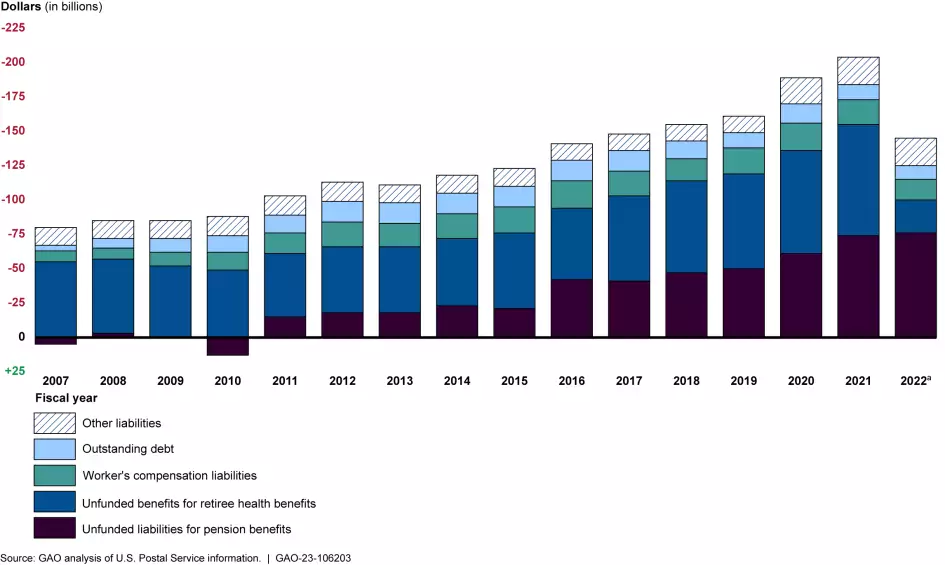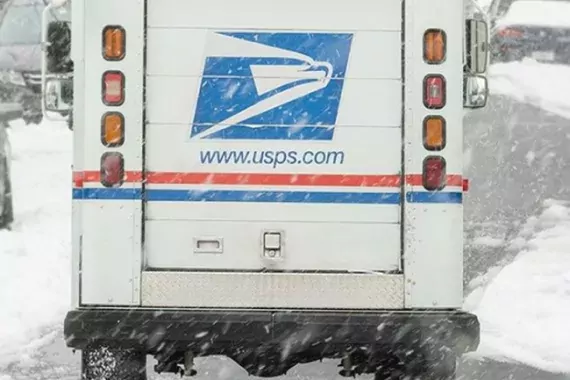U.S. Postal Service Faces More Financial Losses—How Can It Stem the Tide?
The U.S. Postal Service recently announced quarterly financial losses of $1.7 billion, as well as declines in the volume of First-Class Mail, Marketing Mail, and packages. Financial challenges like this are nothing new. The U.S. Postal Service (USPS) has long faced financial challenges that threaten its ability to deliver your mail and pay retirees' benefits, as well as have broader effects on the mailing industry.
The Postal Service has developed a 10-year strategic plan to guide it out of this precarious situation and make it financially self-sufficient, while also improving service performance. The plan includes some upfront spending on changes that are meant to reduce long-term financial issues. Today’s WatchBlog post looks at our new work about USPS’s Strategic Plan—what are the changes and how might they fix these financial woes?
Image

The Postal Service’s poor financial condition
The Postal Service is expected to be financially self-sufficient—meaning it should cover its expenses through the sale of its products and services, not taxpayer money. However, USPS’s revenues haven’t covered its expenses and debt for more than 15 years. And its expenses are growing faster than its revenues, in part due to continuing declines in volume for First-Class Mail—its most profitable product. USPS has been able to continue operating in this situation by increasing its debt and unfunded liabilities.
Total U.S. Postal Service’s Unfunded Liabilities and Debt, Fiscal Years 2007-2022
Image

Congress has provided assistance to USPS through the Postal Service Reform Act of 2022. Key among the changes includes cancelling a requirement that the Postal Service prefund retiree and health benefits. USPS had been required to make regular payments into the Retiree Health Benefits Fund, but it had not made those payments since 2010. However, waiving the past missed payments and repealing the prefunding requirement only provided USPS with financial relief on paper and had no effect on its cash flow.
The Postal Service also now has greater flexibility to increase postage rates. The change allows the Postal Service to adjust its pricing of mail categories such as First-Class Mail and Marketing Mail depending on market and demand. USPS is now making two rate changes a year, in January and July.
But these actions alone will not fully address the Postal Service’s financial issues.
How is the Postal Service’s strategic plan supposed to address its financial woes?
USPS says its 10-year strategic plan, published in March 2021, will allow it to at least break even financially by 2031. The plan focuses on:
- Cutting costs through changes to operations like closing and restructuring some facilities.
- Optimizing delivery operations by restructuring and consolidating delivery routes for more efficient deliveries.
- Growing package delivery business with new products like Ground Advantage package shipping
- Increasing revenue through planned twice-yearly rate increases for certain types of mail
The plan includes more than 120 individual projects intended to improve USPS’s financial condition and operations. Key projects include consolidating mail facilities and replacing the aging delivery vehicle fleet. As of September 2022, about 75% of delivery vehicles were purchased between 1987 and 2001. These vehicles are less safe and are driving up USPS’s maintenance costs.
The plan also includes $40 billion in capital investments of which half ($20 billion) will go toward mail processing and facility improvements. The remaining funding includes $19 billion for improving the retail and delivery network. USPS plans to make these investments to compete with private delivery companies and achieve better and more efficient service to customers.
What’s been done so far and what effect has that had?
The Postal Service has begun implementing projects, with effects ranging from updated internal policies to changes in mail service standards—how many days it should take to deliver a piece of mail. In October 2021, USPS increased the time‐in‐transit standards by 1 or 2 days for certain mail that is traveling longer distances. The Postal Service has already spent almost $3 billion on the initial order for its new vehicle fleet.
So far, any gains have been offset by increased costs that USPS officials say are mostly due to inflation. It also must contend with mail volumes that continue to fall as well as competition for packages with private delivery companies.
The Postal Service’s strategic plan has the potential to help its operations and revenues. But how well the plan is implemented will affect how much help it provides. In our new report, we recommended USPS make policy changes that would improve its implementation of the plan, such as incorporating a lessons-learned process so the Postal Service can better track and address issues across the plan’s many projects.
Learn more by checking out our new report.
- Comments on GAO’s WatchBlog? Contact blog@gao.gov.
GAO Contacts
Related Products

GAO's mission is to provide Congress with fact-based, nonpartisan information that can help improve federal government performance and ensure accountability for the benefit of the American people. GAO launched its WatchBlog in January, 2014, as part of its continuing effort to reach its audiences—Congress and the American people—where they are currently looking for information.
The blog format allows GAO to provide a little more context about its work than it can offer on its other social media platforms. Posts will tie GAO work to current events and the news; show how GAO’s work is affecting agencies or legislation; highlight reports, testimonies, and issue areas where GAO does work; and provide information about GAO itself, among other things.
Please send any feedback on GAO's WatchBlog to blog@gao.gov.



